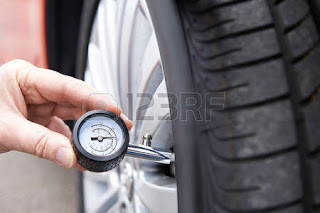What is Liability Coverage?
If you cause an accident or someone is injured on your property, you could find yourself legally liable for the resulting expenses. Medical and legal bills can add up quickly. That's why it's a good idea to know what kind of liability coverage your insurance policies provide and what limits apply. Having the proper safeguards in place may help protect your own finances should the unexpected occur.

Here's a look at how liability coverage may help offer protection:
Auto Liability Coverage
Liability insurance is a standard component of most auto insurance policies and it's a required coverage in most states. Auto liability can help provide protection in two important ways. Bodily injury liability coverage may help protect you if you are found liable for someone else's medical bills or if you're sued after an accident. Property damage liability may help pay for damages you cause - for instance, you hit another car or crash into someone's home.
Homeowners Liability Coverage
Suppose, for instance, a guest slips and falls on your pool deck or a broken stair. If you're found liable for someone else's injury at your home, liability coverage may help cover related medical or legal expenses. This coverage is typically part of a standard homeowners insurance policy, though limits will apply.
Renters Liability Coverage
No one plans for a visitor to become injured, but it can happen. If a guest incurs medical bills from an accident at the home you're renting, liability coverage can help pay for related expenses if you are found legally responsible for the incident. Or if your young athlete accidentally throws a ball through a neighbor's window, liability protection may also help cover the expense of repairing the window
Condo Liability Coverage
Personal liability coverage, which usually comes with a standard condo insurance policy, can help provide protection if, for instance, you're found responsible after someone is injured in your unit. Most condo policies also offer family liability protection, which can help protect you if you're found responsible for someone's medical bills resulting from an accident in your home.
Boat Liability Coverage
Liability coverage on a boat insurance policy can help protect you from paying out of pocket if you're found responsible for someone else's injuries or damage to another person's property resulting from an accident you caused.
Motorcycle Liability Coverage
Liability coverage generally comes in two forms on a typical motorcycle insurance policy. Bodily injury liability coverage can help protect you if you're found responsible for someone else's medical expenses or if someone loses income as a result of a motorcycle accident you caused. Property damage liability coverage can help prevent you from paying out of pocket for repairs or replacement to someone else's vehicle or property if you're found at fault for an accident.
ATV Liability Coverage
As with many other types of liability protection, ATV liability insurance typically offers two kinds of coverage. Bodily injury coverage can help cover someone else's medical bills if they are injured in an accident you caused. Property damage coverage may help protect you from paying out of pocket if if you cause an accident that damages someone else's property while riding your ATV.
Landlord Liability Coverage
Landlords may not live in a property they own, but being the boss comes with certain responsibilities. For instance, suppose a tenant falls over a broken step. If you were found negligent in maintaining the property or failed to advise the tenant of a potential risk, you could be found financially responsible for medical expenses resulting from an injury.
Business Liability Coverage
Small business owners are exposed to risk in a number of ways, which is why many types of business liability insurance are offered. Depending on the policy, liability coverage may help provide protection if, for instance, someone is injured at the business, if a detective product causes someone harm or if an employee sues for discrimination.
Personal Umbrella Policy
While a typical insurance policy may come with some liability protection, limits will apply. That means the policyholder may still be exposed to out-of-pocket expenses in the event that they are found liable for someone else's loss and those expenses exceed what the policy covers. That's where a personal umbrella policy may help. An umbrella policy provides liability coverage beyond the limits of an underlying policy, helping provide greater protection against a potentially financially devastating judgment.




